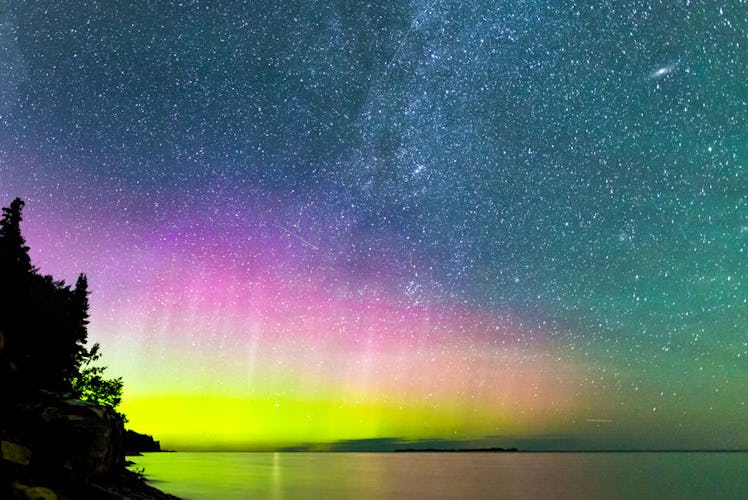
How To See The Orionids Meteor Shower This Month & See The Cosmos At Work
Do you remember the first time you saw a shooting star? I do, and I'll never forget it. I was around 7 or 8 years old, camping out somewhere in the Santa Ynez Valley of California with my family, far away from any cosmopolitan light pollution. What seemed like thousands of stars sparkled in the night sky like pinpricks of light, and since I was born and raised in the city, seeing so many of the cosmos at once was new to me. I was laying down on a reclining chair, staring up into the universe with pure amazement, and suddenly, one of those stars shot across the sky with a bolt of light. "Did you see that?!" I screamed to no one in particular, then quickly got myself together to make a wish. I don't remember what the wish was, but I bet it was a good one. If you'd like your chance to make a wish too, then you'll want to know how to see the Orionids meteor shower 2018 so that you can make as many as you want.
Even though shooting stars are technically meteors burning through the atmosphere, it doesn't subdue the magic one bit. In fact, by planning ahead and watching a meteor shower in action, you'll absorb as much magic as you can.
What Is The Orionids Meteor Shower?
The Orionids are a meteor shower that take place every October. This year, the meteors will peak from Oct. 21 to Oct. 22, and there will be around 20 meteors visible per hour, according to TimeAndDate.com. Like the Eta Aquariids meteor shower, which took place back in May, the meteors radiating from the Orionids are in fact remnants from Halley's Comet, according to Space.com. These meteors are the particles that drift away from the comet as it makes a full circle around Earth over the course of 75 to 76 years. So, not only are the Orionids an opportunity to wish upon a star, it's also an opportunity to wish upon a comet, too.
The Orionids get its monker from the constellation that they appear to travel from, which is Orion (AKA The Hunter), as reported by Space.com.
How Can You See The Orionids Meteor Shower?
Although the waxing gibbous moon will obscure much of the meteor shower from view, you'll still be able to spot more than a few shooting stars if you plan accordingly. According to Space.com, you should find the constellation Orion in the sky so that you know which direction the meteors are traveling from. However, NASA meteor specialist, Bill Cooke, advises that you not look directly at Orion because the meteors closest to the point of origin are more difficult to see.
That being said, you should head somewhere rural, far away from any imposing light pollution, and set yourself up for an evening of Orionids viewing. Space.com advises that you start preparing for the meteors around 1:30 a.m and that you wait around 20 minutes for your eyes to adjust to darkness.
Eventually, you can lie back, gaze up at the night sky, and wait for meteors to bless your universe. According to EarthSky.org, these meteors are sometimes so vivid and bright that they leave behind a trail of glowing light that lingers for a moment after the meteor has flashed. However, Space.com also reports that the Orionids are some of the fastest moving meteors around, reaching speeds that are upwards of 148,000 mph, so you'll want to remain especially alert for any shooting stars that cross your vision. Because of this, Space.com also advises against using binoculars or a telescope to watch the meteor shower, because they'll be moving way too fast for those devices to catch sight of them.